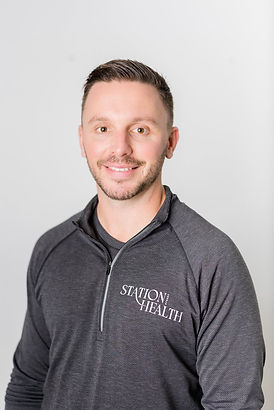Interview with Nathan Edwards, PT

Nathan Edwards has been actively working as a physiotherapist since 2016. He graduated highschool from KVHS, from there he attended UNB before finishing his Masters Degree at Dalhousie University. In his youth he enjoyed playing soccer, representing New Brunswick at a national level continuing his interest in sports by helping out field side with UPEI,UNB football, the Saint John Trojans rugby team and with SJHS football.
-
Among teens and young adults, what is the most common injury you treat? The most common thing I see in youth would be inversion sprains of the ankle (when the foot rolls outward) which are especially common in court sports like basketball and volleyball.
-
Is a female more prone to certain injuries than a male? If so, what ones and what are the differences? Great question! Females, especially young females. are more prone to ACL injuries. Anatomically speaking, females are wider at the hips which creates some slightly different angles at the knee, which results in higher likelihood of injury, especially the ACL (anterior cruciate ligament).
-
What are the risks posed if an athlete doesn't take the time to recover properly? Simply put, the less time taken to recover, the higher the likelihood of re-injury. If something is not fully healed or strengthened before re-entering activity, then they are more likely to hurt the same thing again!
-
Can you describe your academic journey on achieving your current position? I completed a 4 year undergraduate degree at UNB Fredericton, which was a Bachelor of Science in Kinesiology. I then completed a Master's of Science in Physiotherapy at Dalhousie University in Halifax.
-
What was a roadblock you had to face to get your degree? There was no major roadblock for me, but the Master's degree program for physiotherapy is very competitive and is quite hard to get into, so maintaining good marks throughout my journey was key.
-
What, in your professional opinion, is the best way to avoid getting injured? Cross-training and risk avoidance behaviour. For any sport or exercise there is cross-training that can take place to strengthen muscles and joints to minimize injury risk. Other than that, making sensible decisions with your activities are important. Examples: Reducing skiing speed when conditions are icey, etc.
-
What is the best part of your job and then what is the worst? Best: I get to meet different people with different stories every single day and help them on their recovery journey. Worst part: when peoples finances limit their ability to seek treatment, this is the tough part about the private healthcare system.
-
Have you always had a passion for this job or was it a last minute choice? Do you regret anything about the decision you made? I was injured in Grade 11 and had to attend physiotherapy, that was when I decided that this was what I wanted to do and I haven't looked back since!
-
What does the recovery path look like for someone with a grade 2 concussion, how long until they could go back to sports? This is a very tough question, concussions are not as simple as that. A concussion can affect many different areas of our brain and many different systems within the brain, so everyone experiences different timelines.
-
How does training/overtraining affect an athletes performance? Overtraining can have a big effect on performance; our bodies require time to fully heal and recover before we can perform at our best. When we train, we use the principle of "progressive overload" to create improvements in strength and function, but this principle requires rest as well.